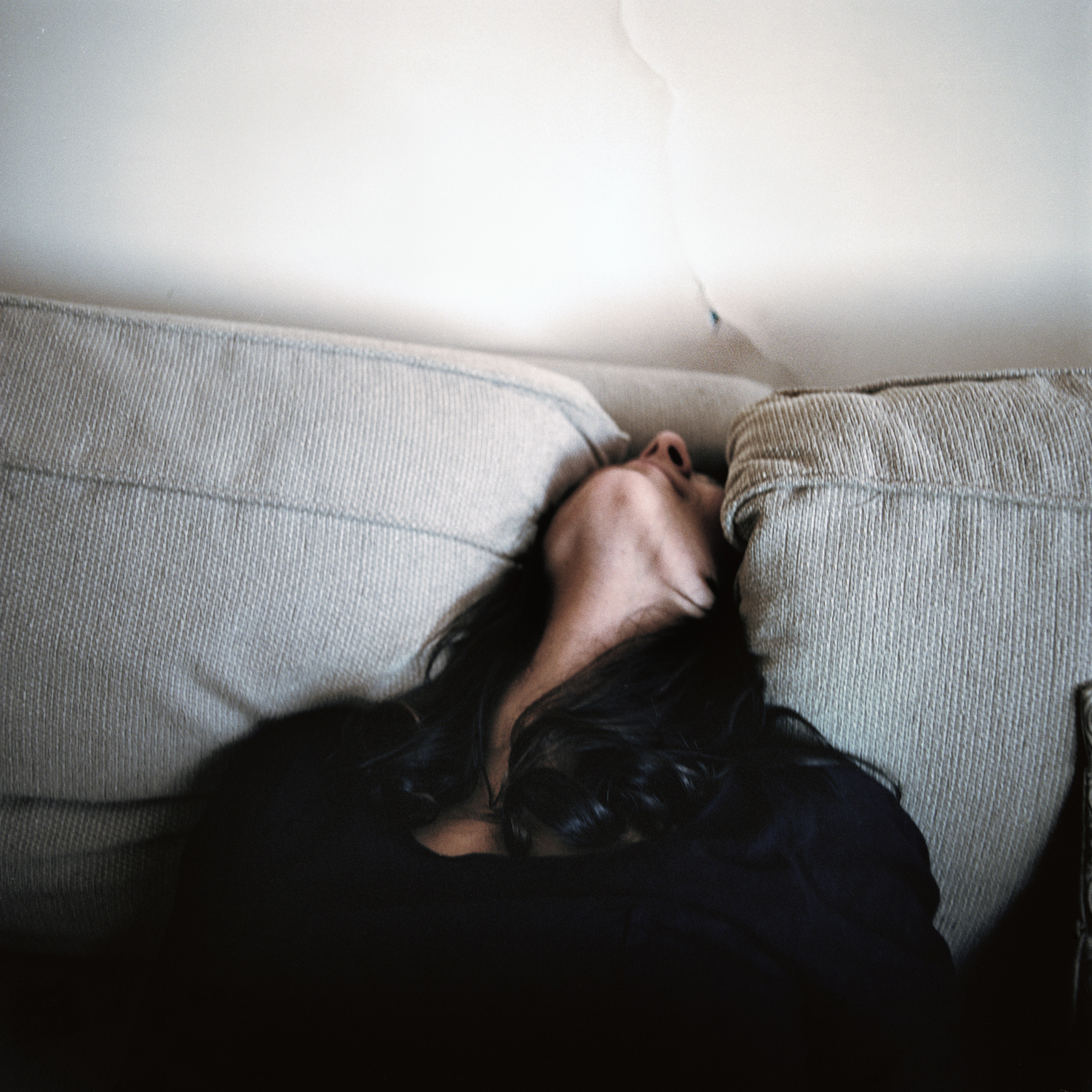Tackling the changing dynamics of modern Turkey through contemporary art in Rome
The danger of any art collective that embeds itself in sociopolitical portrayals is the possibility of viewers experiencing little more than an awareness of the political confines of contemporary aesthetics. By linking itself to ‘this phenomenon’ or ‘that uprising’, it dabbles in the realm of a brand, failing to awaken any reaction by shying away from the questions it should be asking. As such, the audible and inaudible, and the possible and impossible are reduced to depictions of what happened as self-explanatory forms of importance.
British art critic John Berger’s four-part 1972 television series, Ways of Seeing, explored the foundations of seeing and language as understood through differences in perception. ‘It is seeing which establishes our place in the surrounding world’, he wrote. ‘We explain that world with words, but words can never undo the fact that we are surrounded by it.’ Each day, news outlets publish and broadcast accounts of global conflicts – stage one: seeing. But what one ‘establishes’ is a sense of distance, a remote mentality in which what they see can be accessed and denied at the touch of a button – and, more often than not, forgotten. Art embodies experiences in ways that cannot be so easily denied, where the world is, as Berger suggested, ‘explained by words’, but ultimately solidified with finality through art. Thus, for viewers and critics, their eyes act more as prisms that fracture the realm between what is known and what is shown to have been understood. Perhaps the fundamental difference between reacting and failing to act lies in an artistic purpose, an embodiment of movement, energy, and desire, facilitating the awareness of geopolitical power through the intrinsic and inevitable influence of the environment in which an artist thinks, feels, and sees. Yes, aesthetics are political; but the pluralism of forms and practices demand more than a contemporary stagnation. Therefore, the unspoken addendum of contemporary art could be to address that which is unknown in ways that are: the familiar in the unfamiliar.
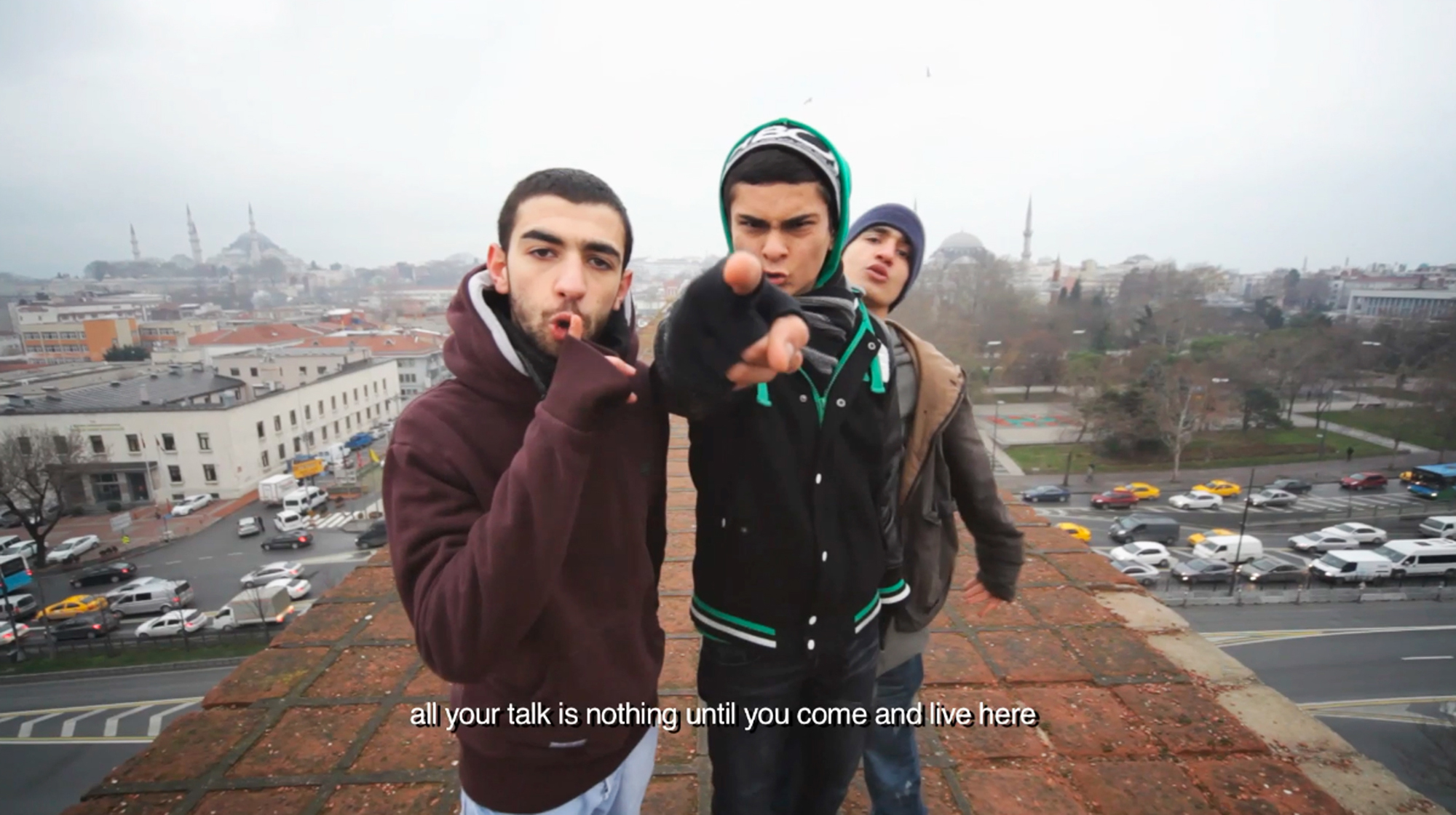
A still from Halil Altındere’s Wonderland (courtesy the artist and the MAXXI)
The Middle East is a part of the world many think they have come to understand through their lack of understanding; it is fraught, complex, ever-changing, bleeding. For most, that is enough to know, and it is left to scholars and politicians to decipher the ‘why’. As such, the term ‘Middle East’ has come to be not so much a geographical term as a political one, and though relatively distant from central Turkey, Istanbul has by no means been isolated from such conflicts. Geographically, Istanbul spans two continents while culturally embodying Asian and European influences. Bordering Syria’s broken heart of the Arab world, Iraq, Iran, Greece, Armenia, the Republic of Azerbaijan, and Georgia, Turkey has remained a volatile portal of overlapping refugee, military, and creative movements in and out of the Middle East.
Social transformations, political tensions, surrounding conflicts, and new communities have elevated Istanbul to a symbol of global change. Accordingly, Istanbul. Passion, Joy, Fury (December 2015 - May 2016), an exhibition of 45 artists, architects, and intellectuals curated by Hou Hanru, Ceren Erdem, Elena Motisi, and Donatella Saroli, and held at the MAXXI in Rome, was dedicated to an assertive deconstruction and resolution of such issues within the city. Against a backdrop of gentrification, expanding communities, and surrounding geopolitical conflicts, Istanbul’s creative community addressed religion, class, and culture-based isolation; violence; ecological crises; gender; solutions to waves of production and consumerism; and the resistance against such works in a place that has come to reshape the meanings of ‘East’ and ‘West’ through conflict and the aftershock of economic, cultural, political, and religious strongholds.
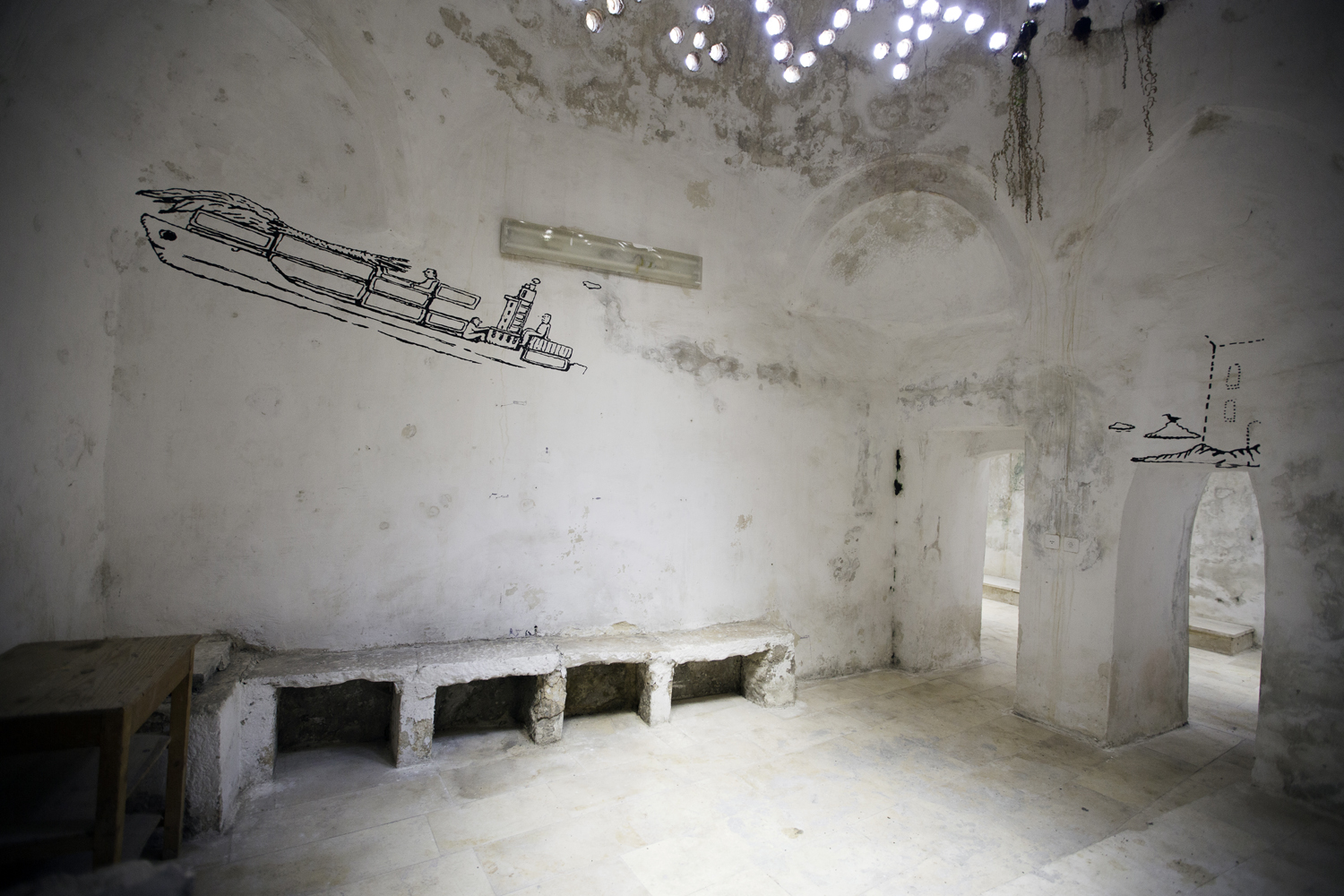
Ceren Oykut - Atlas of Interruptions (courtesy Rula Halawani and the MAXXI)
Commencing with reflections upon the Gezi Park protests in 2013, and moving into current transformations of social and political tension, multiple platforms of testimony served as urgent calls, guiding viewers through six chapters of expressive confrontation with change within an unidentified urban environment.
One: A Rose Garden
When I awoke, I realised I was in a rose garden. Right there in front of me, the mind and the heart were chatting. And the ant on the ground was trying to prevent all the wars in the world.
- Extrastruggle, Rose Garden
As summer began in 2013, the sun bathed a rose garden, which, although removed of thorns, silently looked on as diverse groups of citizens with thorns of their own occupied Gezi Park in solidarity. Many considered the way in which then-Prime Minister Recep Tayyip Erdoğan reacted to the protests to be disproportionate, and as a result, they have become symbols of resistance against large-scale urban and economic change, and limitations of freedom of expression, amongst other things. Looking back on the Gezi Park incident, one is reminded of a moment when issues such as religion’s role in government, environmental sustainability, and cultural unity were faced with a spirit of enduring solidarity. Extrastruggle’s short film Rose Garden was a delicately Dalian collection of illustrations pulled from surrealism into reality, narrating themes of economic corruption, love, justice, literature, and mathematics as meditations for experiencing the mind and the heart as one, and seeing the world as a realm of peace.
Two: Ready for a Change?
Whilst it has been argued that a radical Westernisation programme has successfully ‘modernised’ Istanbul society, many have noted how its contradictory urban development is largely based on monetary profit and the exclusion of the poor. A permanent tension exists between opposing sociocultural models of modernity versus tradition, nationalism versus imperialism, secularism versus religion, and East versus West. These geopolitical tensions have exerted a profound influence on the arenas of real estate and public service, and have led to a landscape distorted by responsive urban renewal and a fragmented urban fabric has woven its way through the city’s architectural past and future. Take Antonio Cosentino’s The Istanbul Atlas, for instance, which strung multi-coloured balloons across the coastline, their hopeful shades of yellow, purple, and blue shot through with black as a reminder of internal and surrounding dangers. Similarly, Ali Taptik captured a woman, her head thrown back between two cushions and a wall cracking like a bolt of lightning above her city that itself is breaking.
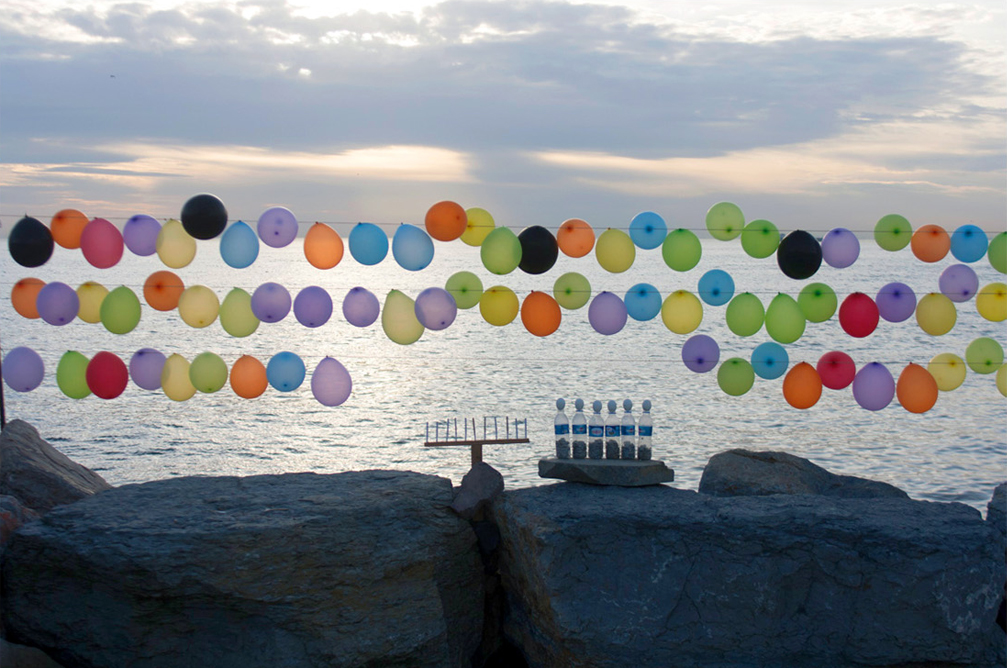
Antonio Cosentino - Istanbul Atlas (courtesy the artist and the MAXXI)
City planners struggle against infinite layers of spatial chaos, and in the exhibition, one found artists and architects presenting Istanbul’s cultural pluralism struggling against the ideologies and values upholding the tension between democracy and globalisation. Possible solutions to aggressive and unregulated construction were reflected upon through investigations of public space and illustrative mappings of exponential change, whilst images of piles of wood in the silhouette of a home beside flowers sprouting from the dirt beneath a shoe suggested not only a readiness, but also a longing.
Three: Can We Fight Back?
At the heart of Istanbul lies a workshop of centralised urban development, built upon the foundations of pulsating social changes. Nestled at the forefront of geopolitical unrest, issues concerning cultural identity, political allegiance, environmental sustainability and religious coexistence have embedded themselves into the architectural and social fabrics of the city, while women are increasingly moving to the forefront of expression. Güneş Terkol’s Against the Current, a woven union of staunch female figures, unshakable as they brandish coloured banners of protest, highlighted both this changing movement and the role of the female voice in tying together the threads of social change. Another woman held the immaculately folded contents of a bedroom above her head; she was the essence of the home, the life-giver, the emotional pillar, the framework of sustenance, support, and guidance. Did she bury the child who once lay in this bed, or the husband? Were they sheets for an unborn child? They were suspended in time, but the spirit lived on, echoing through the urban and private spaces of reflection and debate. This spirit breathed life into a contemporary consciousness laden with traditional values, explored by these artists with an urgency and awareness of the possibility of social fragmentation and the resistance to succumb to its confines, in defiance of separation and silence.
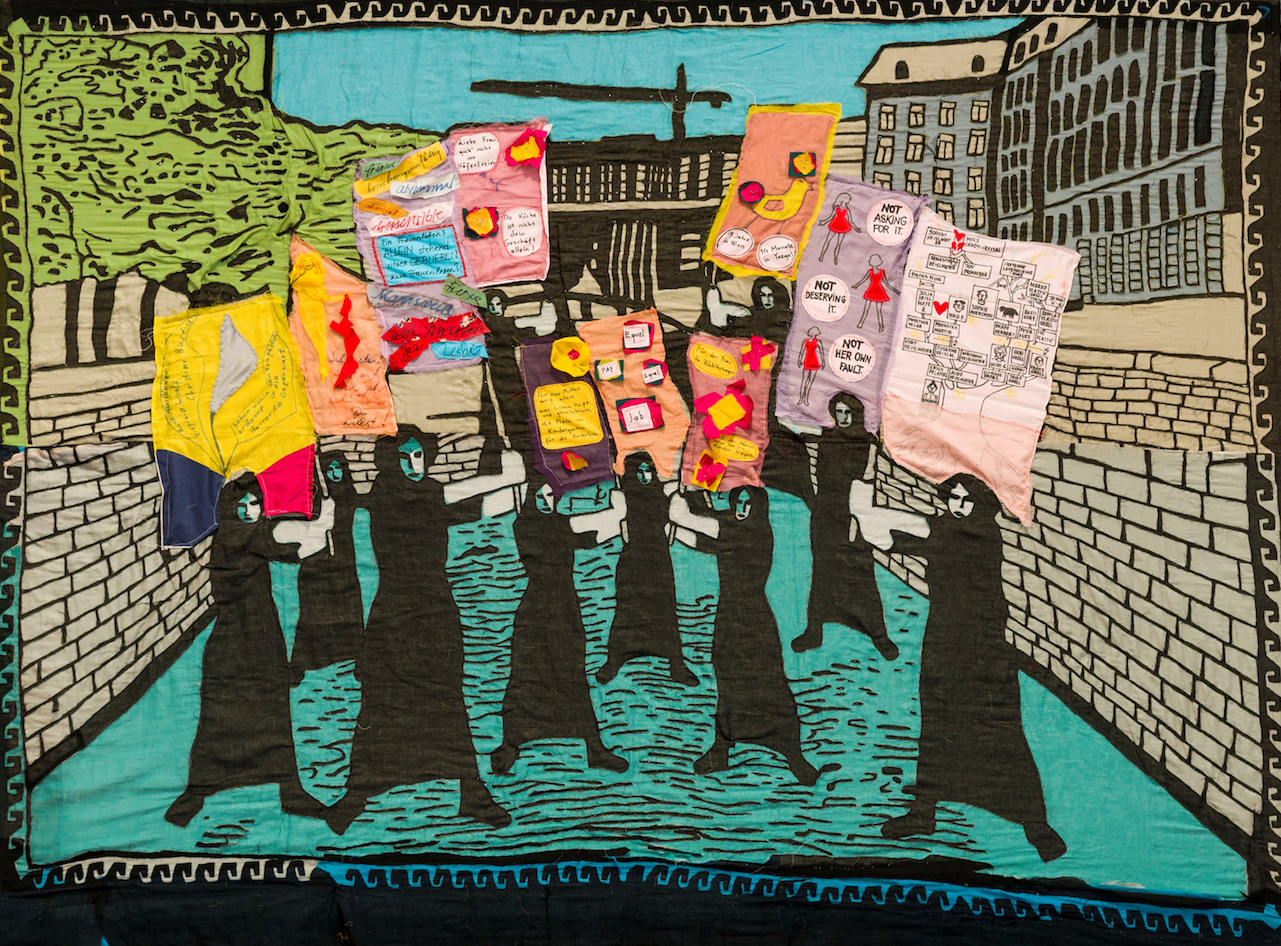
Güneş Terkol - Against the Current (courtesy the artist and the MAXXI)
Four: Should We Work Hard?
Words like ‘exploitation’ and ‘inequality’ are often associated with portrayals of work in art. In this section, any self-denial about man’s place in the global urban commodification of a give-and-maybe-you-get mentality was shattered – but not hopelessly; for it was made clear that through every disjointed power struggle between ‘work’ and the ‘worker’, a narrative of aspirations and dreams prevails. From an aerial view, Osman Bozkurt presented an image of a man walking across silver asphalt heaving beneath the burning sun, with only a tree plastered onto the ground beside him. Elsewhere, Inci Eviner’s Nursing Modern Fall depicted a highly complex collage of mechanical structures providing insights into the lifestyles and habits of the modern man and woman, who turned the cogs of a purposeless machine, strung together with fine lines, across a vintage map of Europe. One was reminded of the individual importance of the macrocosmic corporate machine, and of their status in the world – falling or flourishing.
A dynamic vision of opportunity upheld the spirit of the Gezi Park protests … and it was through an acceptance of the struggle that one was reminded that, yes, they could endure without being condemned
The compromise between survival and satisfaction, value and validation, and rights and remedies are in a constant flux of negotiation. It is said that history will continue to repeat itself until society learns. This segment of the exhibition presented works by artists and architects depicting a profound change in the idea of work, where global interests were resolved without the sacrifice of the individual or the commodification of the self, increasingly viewed as a disposable pawn in the game of global economic interests.
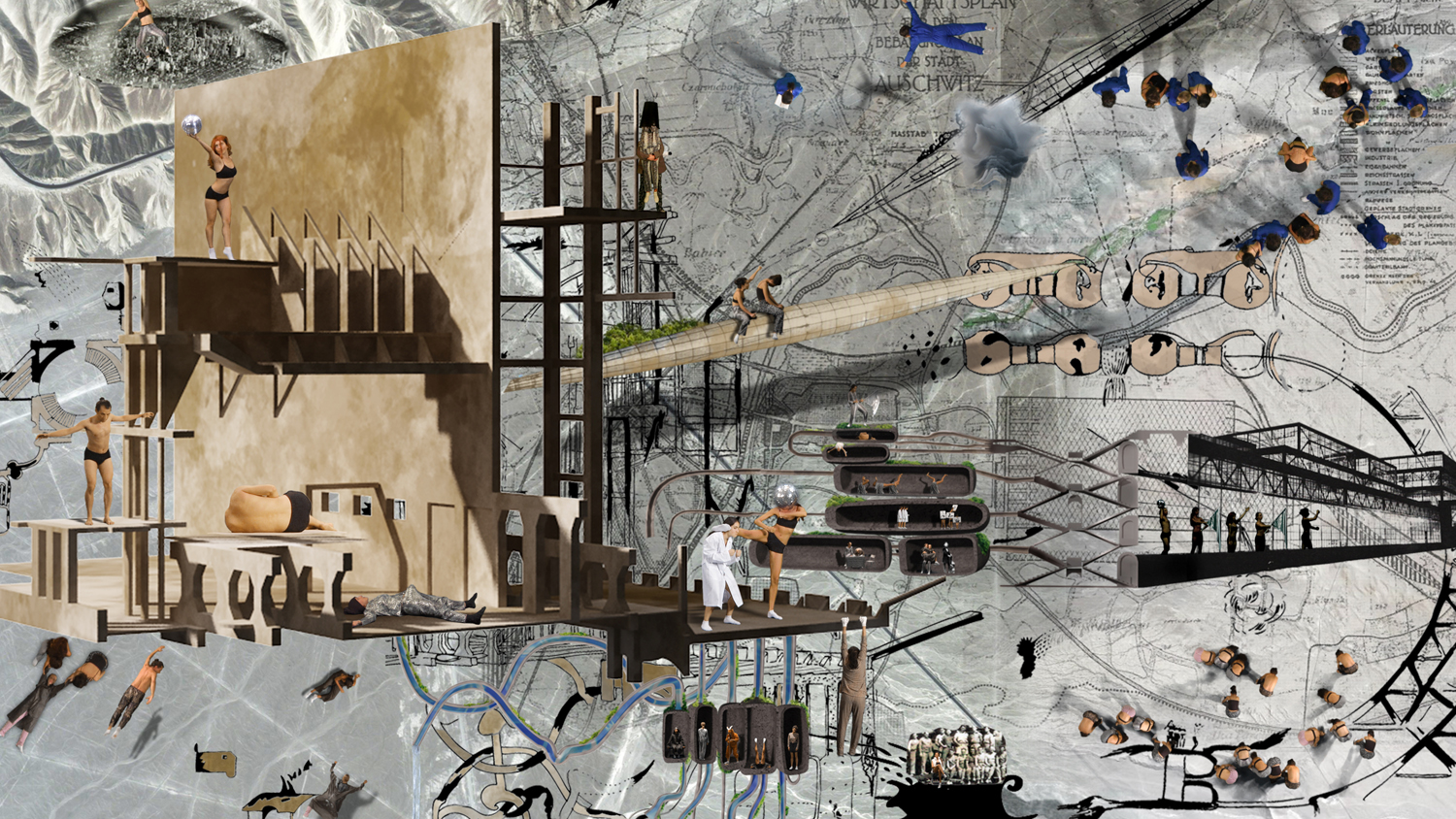
Inci Eviner - Nursing Modern Fall (courtesy the artist and the MAXXI)
Five: Home for All?
‘Home’ means more than bricks and doors encasing sleeping bodies – it is a construct that represents identity, culture, and familiarity. Migration from rural to urban areas owing to Turkey’s leap into industrialisation led to an alienation of neighbourhoods that created ethnically, religiously, and culturally-isolated districts. The Turkish Republic’s nationalist scheme of the 1950s, coupled with policies towards religious minorities resulted in the scattering of multi-ethnic communities and an increasingly-accepted definition of ‘foreigner’ as an Other, or even enemy. Conversely, Turkey is currently part of a collective of countries trying to rehouse Syrian refugees. Cengiz Tekin captured the striking humanitarian solidarity of men standing, some with hands on their hearts, in murky waters. Hundreds of lives had been lost in their effort to escape, and their stories washed away by waves that wage wars of their own. All were unknown, yet identifiable, through both prejudice and love. As urban renovation and expansion have come to shape Istanbul’s skyline, audiences were invited to question whether or not this was merely a means of simply expanding to accommodate, or if Turkey could truly be a home for all.
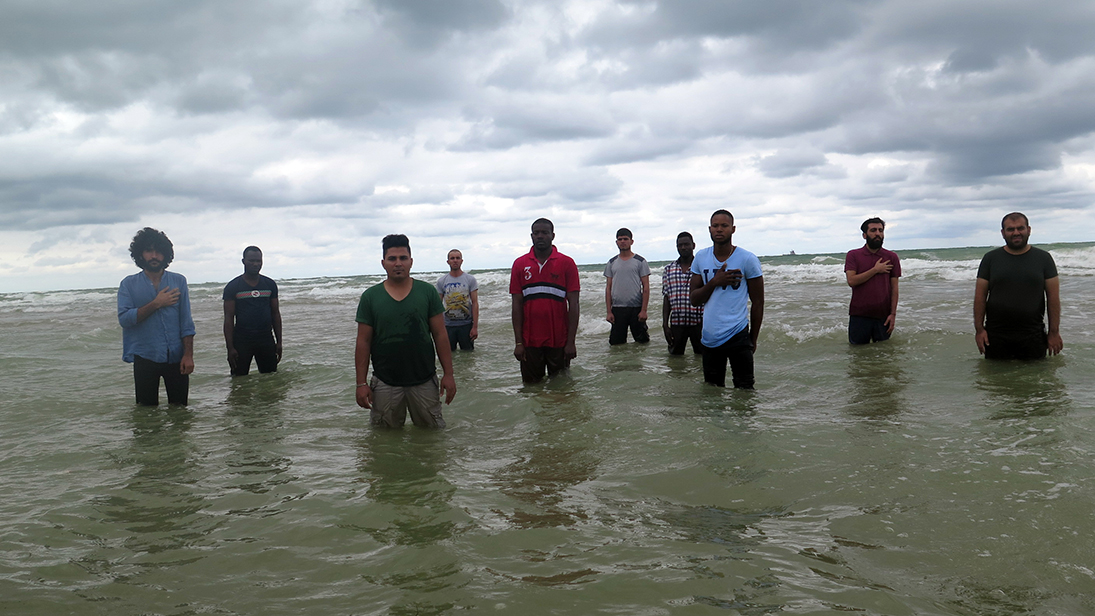
Cengiz Tekin - Just Before Paradise (courtesy the artist and Pilot Galeri)
Six: Tomorrow, Really?
Focused images of unidentified figures – are they guns one sees, or is it the effect of narrowed focus and perspective? Buildings breaking in parallel with social upheaval – will they be demolished, or, as X’s drawings suggested, rebuilt with vitality and promise? Pınar Öğrenci juxtaposed focalised images of unidentified figures through gunshot holes in buildings against the photographic effect of a vignette. Aptly titled Collapsing New Buildings, viewers were reminded that tomorrow, they could build and create, or destroy and ruin. A visual eulogy to the disappearing constructs of an Istanbul reinvented by choice or not, Ceren Oykut’s Atlas of Interruptions presented a series of images of buildings breaking in parallel with the country’s upheaval, only to be rebuilt with the vitality of transposed ink outlines.
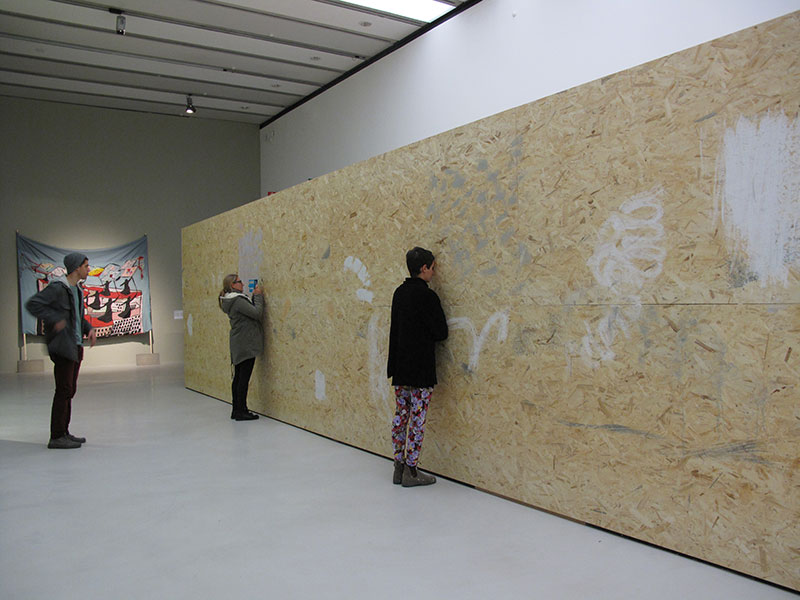
Pınar Öğrenci - Collapsing New Buildings (courtesy the artist)
Through the fragmented landscapes and uncertainties, the future manifests itself as a flexible space of potential and difficult relationships: of progress without the loss of tradition; surrounding conflict and the desire for internal union; economic expansion for all through differences in social classes; ‘silent protests’; and a loud cry for democratisation. A dynamic vision of opportunity upheld the spirit of the Gezi Park protests, where the exhibition had its roots, and it was through an acceptance of the struggle that one was reminded that, yes, they could endure without being condemned. The questions asked were are not left unanswered; rather, novel, proactive remedies offered a reminder of the hope that lies at the end of all this passion, joy, and fury.
‘Istanbul. Passion, Joy, Fury’ ran between December 2015 - May 2016 at the MAXXI.
Cover image: Ali Taptik - Nothing Surprising (detail; courtesy the artist and the MAXXI).
